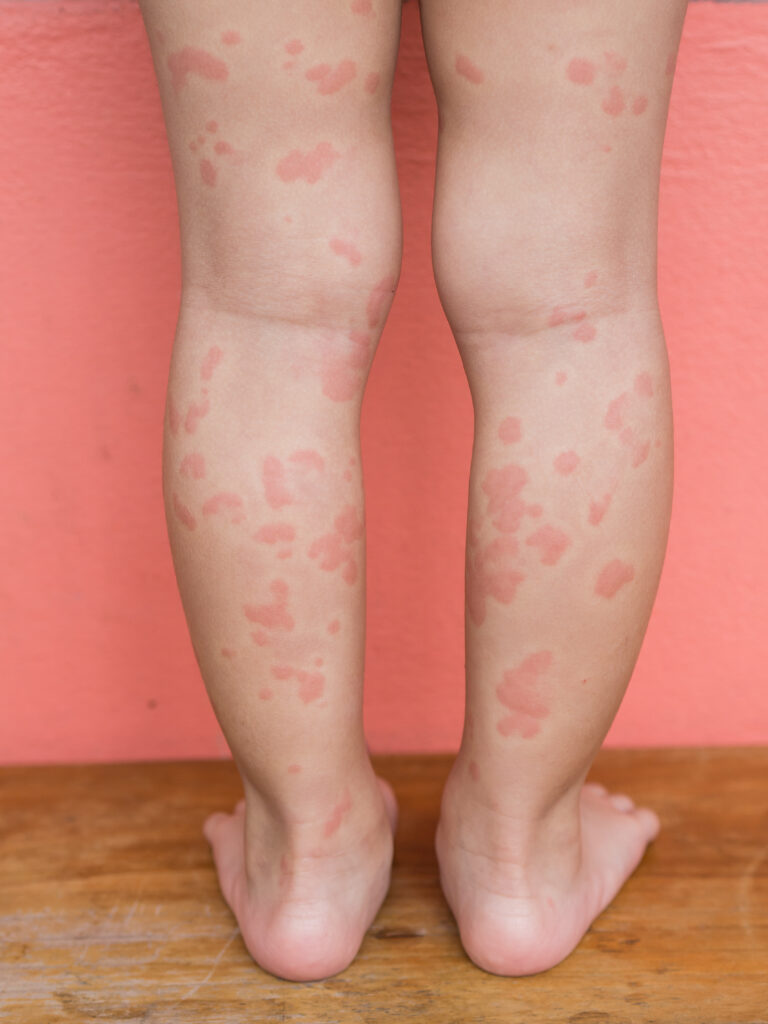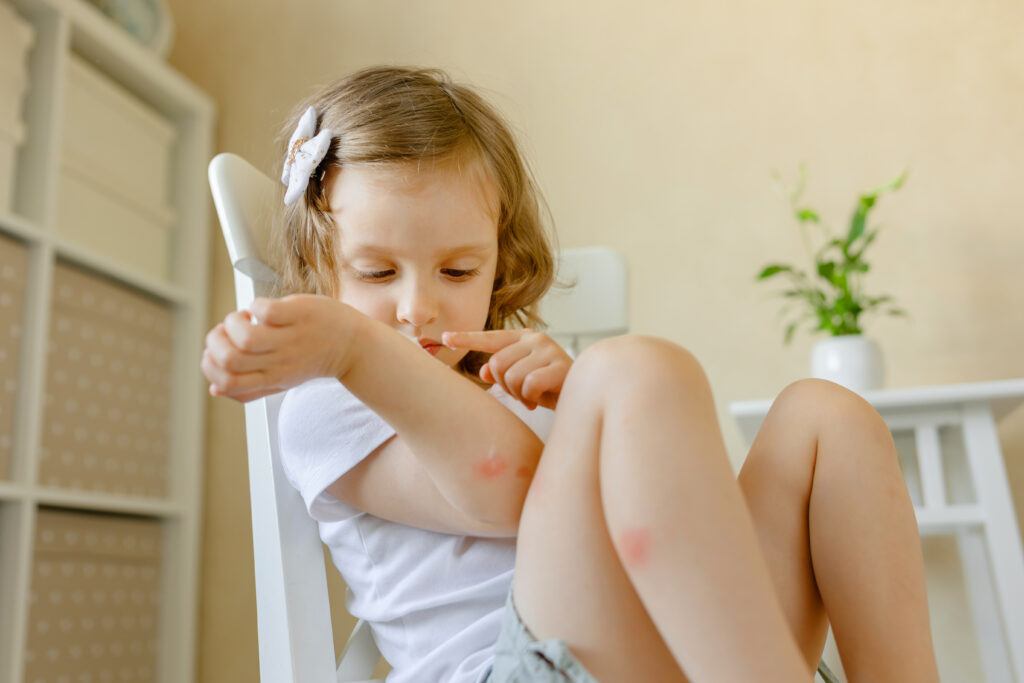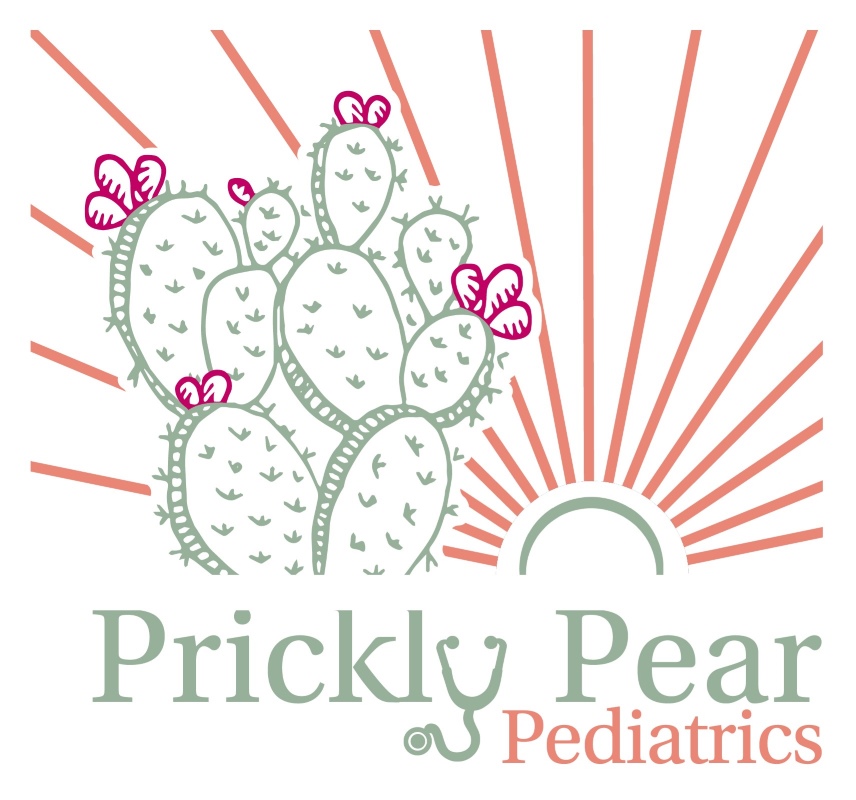Springtime Rashes

We Pediatricians in Texas tend to see a lot more kids coming in for rashes in the springtime. The flowers and trees are in bloom, the pollen is flying, and things get itchy. Rashes are definitely a source of stress and worry for parents, but the good news is that most of the rashes that we see are not dangerous (just annoying). Here are a few rashes that I see as spring weather sets in and what to do about them:
Hives
There are multiple potential causes of hives: viral or bacterial illness, allergic reaction to food, medication, stinging insect, or ingredient, heat/cold exposure, and more. But for people with seasonal allergies, sometimes during the very high allergy season (for most people, spring and fall in Central Texas), their body can get such a big dose of allergen exposure that they break out into hives. In the past two weeks, I have seen three kids come in with hives. They all had a similar story: they were playing outside – at a baseball game, soccer game, birthday party, etc. A day or two later, they break out into hives somewhere. The hives look like light pink to dark pink colored whelps on the body. They are usually pretty itchy. Hives can come and go in different areas fairly quickly. The rash can “move around.”
For children that get hives from their seasonal allergies, giving a dose of an antihistamine such as Zyrtec, Claritin, or Benadryl usually helps with the itchiness. Sometimes the antihistamine will make the rash fade, but it usually doesn’t completely disappear right away. Cool cloths on the rash can make it less itchy. The hives are usually more itchy when a child gets hot and sweaty. I always recommend checking in with your child’s doctor if they develop hives to ensure that there is nothing more serious going on and to discuss their treatment plan.
If your child has hives and also has one of the following symptoms: vomiting, lip/tongue swelling, difficulty breathing, or acting very tired/out of it – then you need to go straight to the ER as those are potential signs of anaphylaxis. However, this is rare, and more commonly, I just see kids with the itchy hives by themselves, which you can treat at home. Hives caused by seasonal allergies usually fade gradually over the course of a week.
The Grass Rash
There is a rash that kids get from playing around in the grass. I call it the grass rash, although this is not an official medical name, it’s descriptive of the culprit. It usually looks like tiny pink bumps scattered on the arms and legs, or whatever part of their body was rolling around in the grass. It is a little itchy. It doesn’t have blisters or bubbles, just little pink dots. This rash doesn’t tend to move around or spread out like hives do.
The rash is caused by either tiny bugs/gnats in the grass that bite, or by the pointy blades of grass themselves causing irritation on the child’s skin, or both. The grass rash goes away on its own in a few days. If it is very bothersome to the child (which it usually isn’t), you can try calamine lotion or you can apply hydrocortisone 1% 1-2 times per day for two or three days. Do not continue hydrocortisone cream for a prolonged period of time. The grass rash is not the same as the rash caused by poison ivy/poison oak, which is usually very itchy/painful and I will go over in a future post.

3. Mosquito Bites
If you haven’t been bitten by a mosquito before, you’re not living in Texas! They cause itching and misery every year once the weather gets warm enough. A common reason for parents to bring their child in with mosquito bites is that they are concerned that their child is allergic to mosquito bites because the area of the bite gets very swollen and red. This is what we call a local reaction to the mosquito’s saliva. Young children are actually more likely to developed a more impressive looking local reaction to a mosquito bite than older children and adults. The reason for this is that it takes a few summers (or mosquito seasons) of repetitive exposure to a certain type of mosquito for the body to develop a bit of immunity to the mosquito bites. Adults have typically been bitten many years in a row and their bodies can become somewhat desensitized to the bites (they still get an itchy bite, but overall less swelling and discomfort). This may not be true for everyone, but this does tend to be the general trend.
However, a true systemic allergic reaction to a mosquito bite is very rare. Signs of a systemic allergic reaction would be generalized urticaria (hives), vomiting, difficulty breathing, lip/tongue swelling, and lethargy developing a few minutes to hours after the mosquito bite. If those symptoms were to occur, you would need to take the child to the ER. But for kids with a local reaction to the mosquito bite (redness, swelling, itchiness, pain that develops a few hours after the bite), you can try cool compresses, an oral antihistamine (if age appropriate – discuss with your doctor), and hydrocortisone cream (again, if age appropriate) to soothe the itching.
It is important to minimize scratching! Keep your child’s nails short and keep areas with mosquito bites covered if possible so that they are harder to scratch. These reactions usually start to gradually get better 3-4 days after the initial bite. If the redness and swelling is getting worse instead of better after a few days, definitely check in with your child’s doctor, as mosquito bites can sometimes become infected and need further treatment. Of course, you can try to prevent/minimize mosquito bites by having your kids wear long sleeves/pants or using insect repellant.
I hope you all enjoy the springtime weather while it lasts!
~~ Dr. Webb
Resources:
